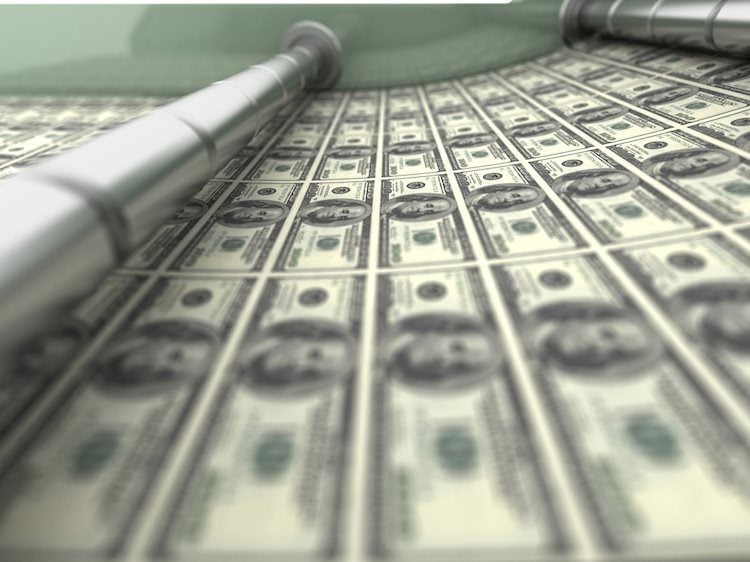- The Greenback heads lower again after earlier erasing all losses from earlier this week.
- Import-Export numbers to point to a slow down.
- The US Dollar Index flirts with a 106 break again.
The US Dollar (USD) is picking up where it left off on Thursday, showcasing its resilience after one component of the monthly headline inflation gauge ticked up against all odds. Inflation fears got reignited again, triggering a bond sell-off. US yields soared, fueling the Greenback rally against most major peers. Where the US Dollar Index is trading at the moment, it looks like this week’s weakness was just a small decoupling, and more US Dollar strength is to be factored in.
Though intraday the picture is turning a bit ugly again after the Import-Export numbers point to a cool down of the US economy. This means that the US economy could be at a tipping point and might need help from the US Federal Reserve. It is either that or a hard landing for the US economy which would mean much more market turmoil ahead.
Daily digest: US Dollar jumps around
- The US Import-Export numbers were a downbeat surprise and halted the Greenback rally in its tracks: For the monthly gauge, Export Prices went from 1.1% to 0.7%. The Yearly component went from -5.5% to -4.1%. The Import Price Index went from 0.6% to 0.1%. The yearly component went from -3% to -1.7%.
- At 14:00 GMT the University of Michigan (ISM) will release its Sentiment Index and Consumer inflation expectations. The Sentiment Index is expected to head from 68.1 to 67.4. The Inflation expectation is expected to remain steady near 2.8%.
- Equities are not dealing well with the current shift in sentiment and are sliding lower: The Hang Seng is the biggest loser, down over 2%. European equities are retreating as well, though less than 1%. US equity futures are flat and clueless concerning direction for now.
- The CME Group FedWatch Tool shows that markets are pricing in a 90.2% chance that the Federal Reserve will keep interest rates unchanged at its meeting in November.
- The benchmark 10-year US Treasury yield soared to 4.66%, even briefly testing 4.69%. The surprise uptick in headline inflation reshuffled the bond market into higher rates again.
US Dollar Index technical analysis: Weekly gains at risk again after Import-Export data
The US Dollar is playing tricks on investors and traders. After the US Dollar Index (DXY) briefly snapped its weekly winning streak, it snapped as well a very important technical ascending trendline that was supporting price action since July. After the surprise uptick in headline monthly inflation, it looks like the yield story is back in play and the US Dollar Index is set to restart its winning streak after a small hiatus.
The DXY opened above 106 and should at least be able to make a new high for this week, above 106.60. On the topside, 107.19 is important to reach if the DXY can get a daily close above that level. If this is the case, 109.30 is the next level to watch.
On the downside, the recent resistance at 105.88 did not do a good job supporting any downturn. Instead, look for 105.12 to keep the DXY above 105.00. If that does not do the trick, 104.33 will be the best level to look for some resurgence in US Dollar strength with the 55-day Simple Moving Average (SMA) as a support level.
Risk sentiment FAQs
In the world of financial jargon the two widely used terms “risk-on” and “risk off” refer to the level of risk that investors are willing to stomach during the period referenced. In a “risk-on” market, investors are optimistic about the future and more willing to buy risky assets. In a “risk-off” market investors start to ‘play it safe’ because they are worried about the future, and therefore buy less risky assets that are more certain of bringing a return, even if it is relatively modest.
Typically, during periods of “risk-on”, stock markets will rise, most commodities – except Gold – will also gain in value, since they benefit from a positive growth outlook. The currencies of nations that are heavy commodity exporters strengthen because of increased demand, and Cryptocurrencies rise. In a “risk-off” market, Bonds go up – especially major government Bonds – Gold shines, and safe-haven currencies such as the Japanese Yen, Swiss Franc and US Dollar all benefit.
The Australian Dollar (AUD), the Canadian Dollar (CAD), the New Zealand Dollar (NZD) and minor FX like the Ruble (RUB) and the South African Rand (ZAR), all tend to rise in markets that are “risk-on”. This is because the economies of these currencies are heavily reliant on commodity exports for growth, and commodities tend to rise in price during risk-on periods. This is because investors foresee greater demand for raw materials in the future due to heightened economic activity.
The major currencies that tend to rise during periods of “risk-off” are the US Dollar (USD), the Japanese Yen (JPY) and the Swiss Franc (CHF). The US Dollar, because it is the world’s reserve currency, and because in times of crisis investors buy US government debt, which is seen as safe because the largest economy in the world is unlikely to default. The Yen, from increased demand for Japanese government bonds, because a high proportion are held by domestic investors who are unlikely to dump them – even in a crisis. The Swiss Franc, because strict Swiss banking laws offer investors enhanced capital protection.
